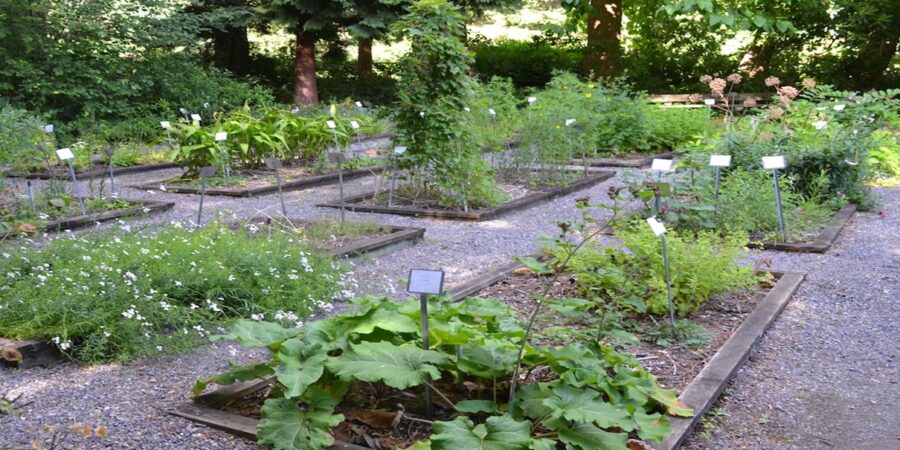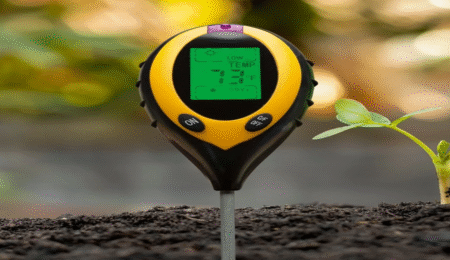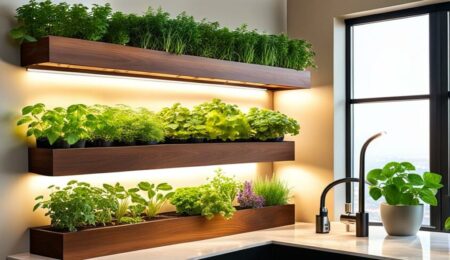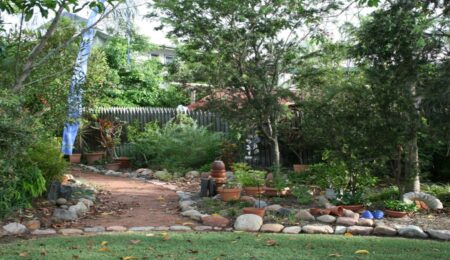How to Grow a Simple Medicinal Herb Garden at Home
Imagine walking into your backyard or onto your balcony, snipping off a few fresh leaves, and making your own calming tea, natural skincare blend, or homemade salve. With a little planning and the right herbs, that dream can become reality. A medicinal herb garden isn’t just about plants. It’s about creating a wellness space right where you live. Whether you’re new to gardening or just curious about healing herbs, this beginner-friendly guide will show you how to grow a medicinal herb garden at home, even if you’ve only got a few pots and a sunny windowsill.
Why Grow Your Own Medicinal Herb Garden
There’s something deeply satisfying about growing your own remedies. You know exactly what went into the soil. You control how the plants are treated. And when you use them, you’re not relying on anything synthetic or packaged—just nature. A medicinal herb garden for beginners is a great step toward a more mindful, natural lifestyle. Plus, growing herbs is much easier than you might think. Many medicinal herbs grow well in pots, require minimal care, and produce harvests all year long.
Starting Out with the Right Plants
If you’re wondering how to start a small medicinal herb garden, it’s best to begin with herbs that are both useful and easy to grow. Focus on easy medicinal plants to grow at home that also serve multiple purposes—like teas, salves, tinctures, and even meals.
Some of the best herbs for natural healing gardens include:
Chamomile
Soothing, calming, and perfect for teas. It’s also one of the best herbs for anxiety and sleep gardens.
Peppermint
Great for digestion, headaches, and even colds. It thrives in pots and is ideal for growing digestive aid herbs at home.
Lemon Balm
An antiviral herb that helps with stress and mild insomnia. Plus, it smells amazing.
Calendula
Known for skin healing, this flower is perfect for natural skincare and salve making.
Lavender
A must-have for a fragrant healing herb garden, lavender supports sleep, stress relief, and makes a beautiful addition to oils and bath soaks.
These are just a few examples of healing herbs for women’s health gardens, immune boosting plants for home gardens, and herbal remedy plants for home gardens that you can grow with little effort.
Picking the Right Spot
Before you plant anything, think about where your herbs will live. Most medicinal herbs need full sunlight, about six hours a day. Whether you’re creating a backyard healing garden setup or setting up a few pots on a balcony, light is key. If your outdoor space doesn’t get much sun, don’t worry—herbs like mint, parsley, and lemon balm can still do well with partial sunlight.
If you’re working with containers, make sure they drain well. Medicinal herbs that grow well in pots need airflow and drainage to prevent root rot. You can repurpose old buckets, baskets, or ceramic pots—just add holes if needed.
Soil and Water Basics
Healthy herbs start with healthy soil. For most healing plants, a loose, well-drained organic mix is ideal. Avoid heavy, soggy soil. If you’re serious about long-term success, look into the best soil for medicinal herb gardening—something rich in compost with good aeration. It keeps the roots happy and the herbs full of nutrients.
Watering depends on your climate, but most herbs prefer soil that’s kept moist but not soaked. Overwatering is a common mistake, especially with potted herbs. Let the top inch of soil dry out before watering again. This is one of the key organic medicinal herb gardening tips that’ll keep your plants thriving.
Designing Your Garden Space
A functional garden layout makes a big difference. Think about groupings. Plant herbs with similar sunlight and watering needs together. For a low-maintenance medicinal herb garden, consider using raised beds or vertical planters. They save space and reduce weeding. Some creative medicinal herb garden layout ideas include spiral gardens, tiered wooden boxes, or even window-mounted containers.
You can also add companion herbs like basil, dill, and rosemary, which support plant health and can boost your overall garden ecosystem. These make excellent companion herbs for garden health while also being useful in the kitchen.
Herbal Healing for Specific Needs
Not every herb serves the same purpose. You can design your garden around specific needs or health goals.
For immune support, try echinacea, elderberry, and oregano—they’re powerful immune boosting plants for home gardens and make excellent cold and flu teas.
For digestion, go for fennel, peppermint, and ginger. These are some of the top digestive aid herbs you can grow at home.
For stress relief, choose lavender, lemon balm, and holy basil, which are all excellent adaptogenic plants for herbal gardens.
Need something for inflammation? Then turmeric, thyme, and sage are great anti-inflammatory herbs you can grow at home.
There are also medicinal herbs for tea gardens like hibiscus, chamomile, and spearmint, which blend well and taste great.
If you’re planting with kids or elderly family members in mind, stick to easy healing herbs for kids’ gardens like mint, calendula, and chamomile, and healing garden plants for seniors such as lemon balm and sage that require less maintenance but offer big wellness benefits.
Caring for Your Healing Herbs
Once your herbs are planted, regular care is simple. Trim often to promote new growth. Use the leaves fresh or learn how to dry and store healing herbs for long-term use. Drying can be as easy as hanging bunches upside down in a dry, airy space or using a dehydrator.
Properly dried herbs can last up to a year and are perfect for teas, tinctures, oils, and salves. If you’re planning to grow herbs for homemade salves and oils, consider adding comfrey, plantain, or calendula to your mix.
Using Your Garden for Wellness
You don’t have to be a certified herbalist to enjoy the benefits of a DIY healing herb garden for wellness. Try steeping fresh or dried herbs for tea, infusing oils for massage or skincare, or mixing simple tinctures for everyday ailments. A herbal garden for natural skincare can help with rashes, burns, or dry skin. A detox garden plan might focus on herbs like dandelion, burdock root, and nettle to help cleanse the body naturally.
When it comes to pain relief, herbs like willow bark, turmeric, and ginger can be grown and used right from your own space. These are some of the most useful herbs for pain relief to grow at home.
Keeping Things Sustainable
If you want your garden to last, think about sustainability from the start. Use compost, collect rainwater, and avoid synthetic pesticides. These are simple sustainable medicinal herb garden tips that will help your plants—and the planet—stay healthy.
Choose high-yield medicinal herbs like oregano, mint, and lemon balm that keep producing after multiple harvests. Add a few perennials for medicinal herb gardens like echinacea or sage that come back year after year.
If you live in a hot or humid place, explore the top herbs to grow in tropical climates such as lemongrass, turmeric, and holy basil. These thrive in the heat and still offer powerful healing benefits.
From Garden to Apothecary
As your garden grows, you’re not just cultivating plants. You’re building your own wellness toolkit. Many of these herbs are natural antibiotic herbs you can grow at home, like garlic and thyme. You’ll also be able to grow your own herbal apothecary right outside your kitchen door.
Herbs like rosemary and thyme serve dual culinary and medicinal uses, making them incredibly versatile. Whether you’re cooking dinner, easing a cold, or calming down after a long day, your garden has your back.
Conclusion
This isn’t just about the herbs. It’s about creating a space that supports your health, your goals, and your lifestyle. As your experience grows, your garden can grow with you. You’ll try new plants, learn new remedies, and eventually teach others how to grow a medicinal herb garden at home too.
There’s no single right way to do it. Maybe you start with pots on a patio. Maybe you build a full backyard setup. Maybe your herbs grow on a sunny kitchen windowsill. However you do it, you’re taking a powerful step toward wellness. So roll up your sleeves, pick your first few plants, and create your own herbal medicine garden. Your future self will thank you.




Leave a Reply